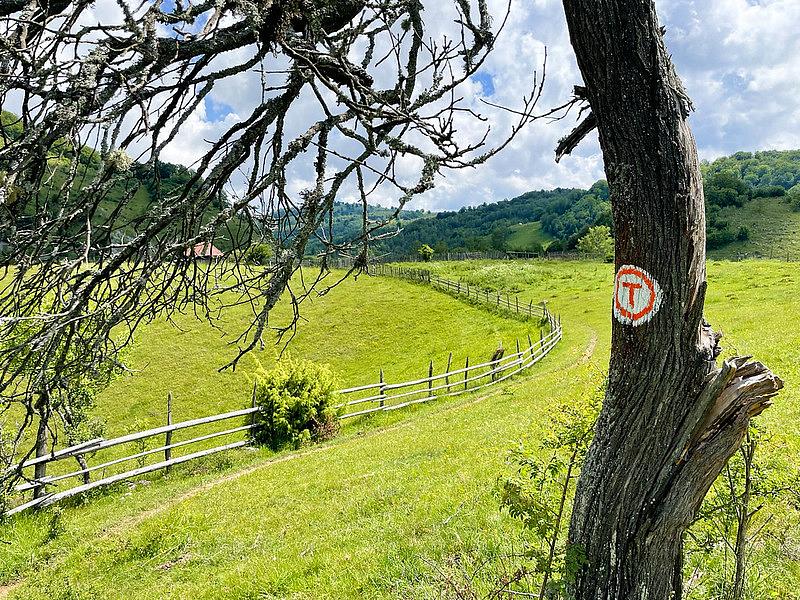Romania’s Via Transilvanica route glowingly featured in BBC article



Romania’s Via Transilvanica route was the subject of a recent BBC feature. Writer Andrew Eames glowingly describes his trip, detailing each stop along the way.
Via Transilvanica, stretching along 1,400km, stitches together some of Europe's most traditional landscapes and communities with 12 Unesco World Heritage sites. The route runs diagonally across Romania from northeast to southwest, mostly through the mountains, forests, and villages of the Transylvania region.
Eames is met with monasteries, rolling high pastures, highlands, and stunning views, meeting fellow travelers along the way. He is tempted by apple brandy, or palinca, raw onions, sheep’s cheese, and more.
“The route is extremely well-waymarked and mapped, mostly along a mix of cart tracks and well-trodden footpaths. The trail guide breaks it down into manageable stages, usually between 15-25km, with detailed route descriptions and recommendations for every overnight stop. As a rule, these guesthouses are owner-run, with only a handful of rooms, and some with camping options too. It is important to book ahead, especially if you want to eat, too. Expect to pay around RON 120-150 (GBP 20-25) per night for accommodation, plus around RON 50 (GBP 8.50) for dinner, and RON 30 (GBP 5) for breakfast,” the article notes.
Via Transilvanica, launched two years ago, won the Europa Nostra Award recognizing outstanding heritage conservation initiatives. Its path crosses with traditional landscapes, rich in bears and wolves, although they are active mainly in the dawn and dusk.
“Romania's Carpathian Mountains are home to the densest brown bear populations in Europe. Fortunately, I didn't see any. I took to talking to myself out loud, just in case. I did spot some deer in the distance, but mostly it was just me in woods and meadows, listening to bird song and breathing in great lungfuls of unblemished air,” the writer says.
The route also connects some 18 different ethnic and cultural regions in the rich tapestry that constitutes modern-day Romania, he adds.
(Photo source: Via Transilvanica)